Italian Gourmet
Italian cuisine has ancient roots and a fascinating history. Over the centuries, it has been influenced by various cultures and civilizations, including the Etruscans, Romans, and Greeks, which have contributed to creating a wide variety of dishes and techniques that vary greatly from region to region.
Each region has its typical products, passed down from generation to generation, tied to culture and tradition. From North to South, there are unique specialties that make Italian cuisine captivating, flavorful, and interesting to explore.
Northern regions like Piedmont and Lombardy are influenced by alpine cuisine and are famous for their meat, cheese, and mushroom-based dishes.
Piedmont, in particular, is known for its refined and flavorful cuisine. You can enjoy dishes like “brasato al Barolo,” “agnolotto del plin,” the famous white truffle of Alba, and cheeses like “toma.”


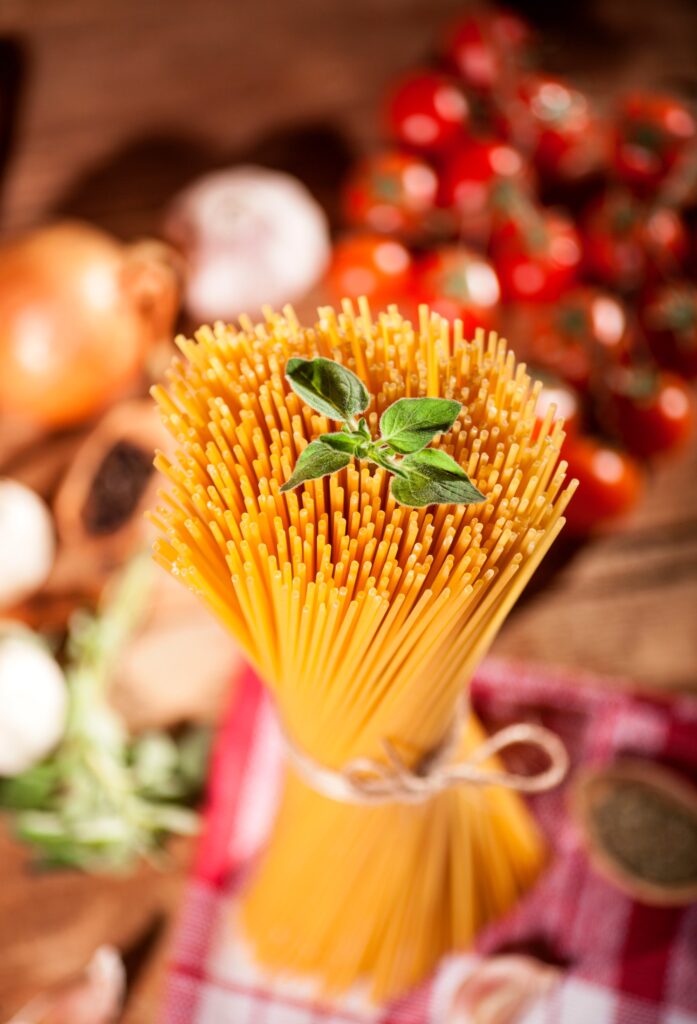
The traditional cuisine of Liguria is simple and closely tied to local ingredients. The aromas of Mediterranean herbs like basil and rosemary blend with the flavors of the sea and local vegetables, resulting in tasty and aromatic dishes. One of the most famous dishes is “trofie al pesto,” with handmade pasta dressed in the renowned Genovese pesto made from basil, pine nuts, garlic, Parmesan, pecorino, and extra virgin olive oil.
The cuisine of Trentino Alto Adige combines culinary traditions from Central Europe, such as Hungarian and Tyrolean, as well as Slavic and German influences. Here, you can savor specialties and typical products like “carne salada,” beef goulash, speck, and sausages. The production of mountain milk is also significant, yielding delicacies like butter and yogurt.
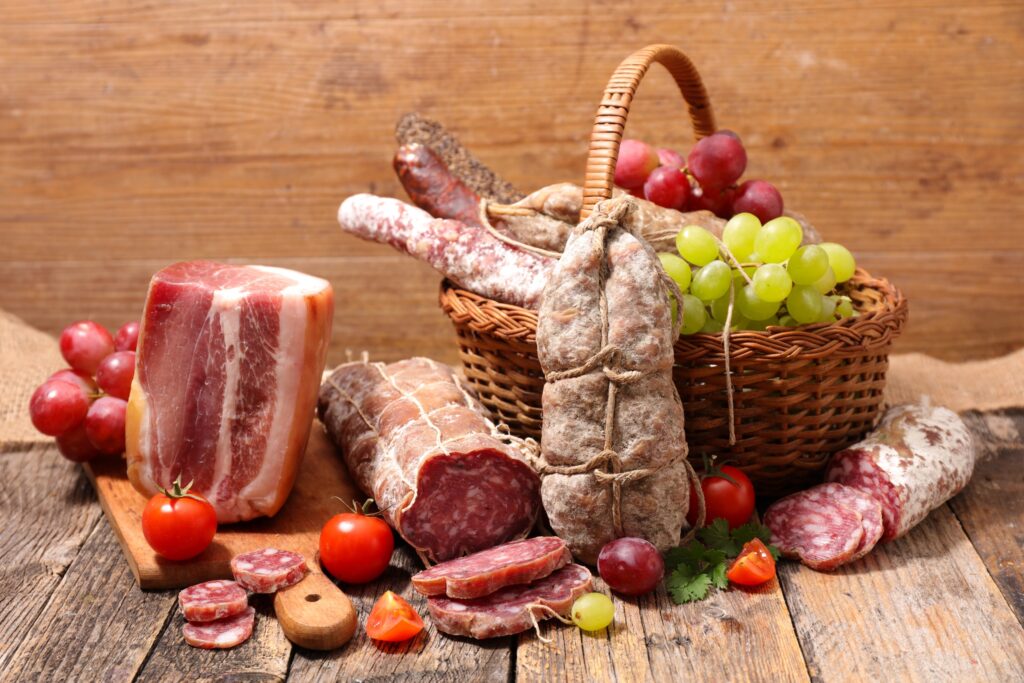
The cuisine of Friuli-Venezia Giulia is famous for its variety and richness of flavors, offering authentic and tasty dishes characterized by typical products such as Montasio DOP, a hard cheese with a slightly spicy note, San Daniele DOP ham, as well as Sauris ham and Pitina.

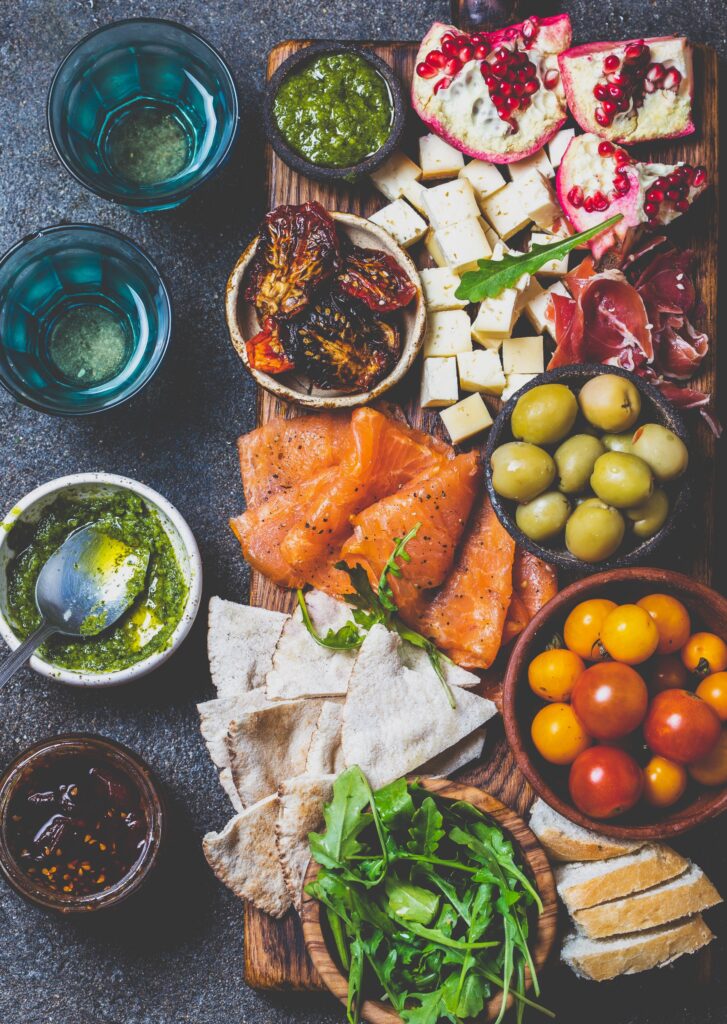
The culinary history of Emilia-Romagna is closely tied to its privileged geographical location and the variety of ingredients and products available, which have contributed to creating a unique and diverse cuisine, even from city to city. Emilia-Romagna is famous for its cured meats, such as Parma ham (Prosciutto di Parma DOP), culatello di Zibello DOP, and Bologna IGP mortadella, which are integral to the local gastronomic culture. The region is also renowned for its cheeses, with Parmigiano Reggiano DOP being the most famous, prepared using traditional methods passed down through generations. Another significant element of Emilian-Romagnol cuisine is fresh pasta. The region is known for a wide range of handmade pasta, such as tortellini, tagliatelle, and passatelli, often served with delicious sauces, like Bolognese ragù, which has become one of the most famous pasta sauces worldwide. Among the typical products of the region are also zampone and cotechino, primarily consumed during the winter season and holiday festivities..
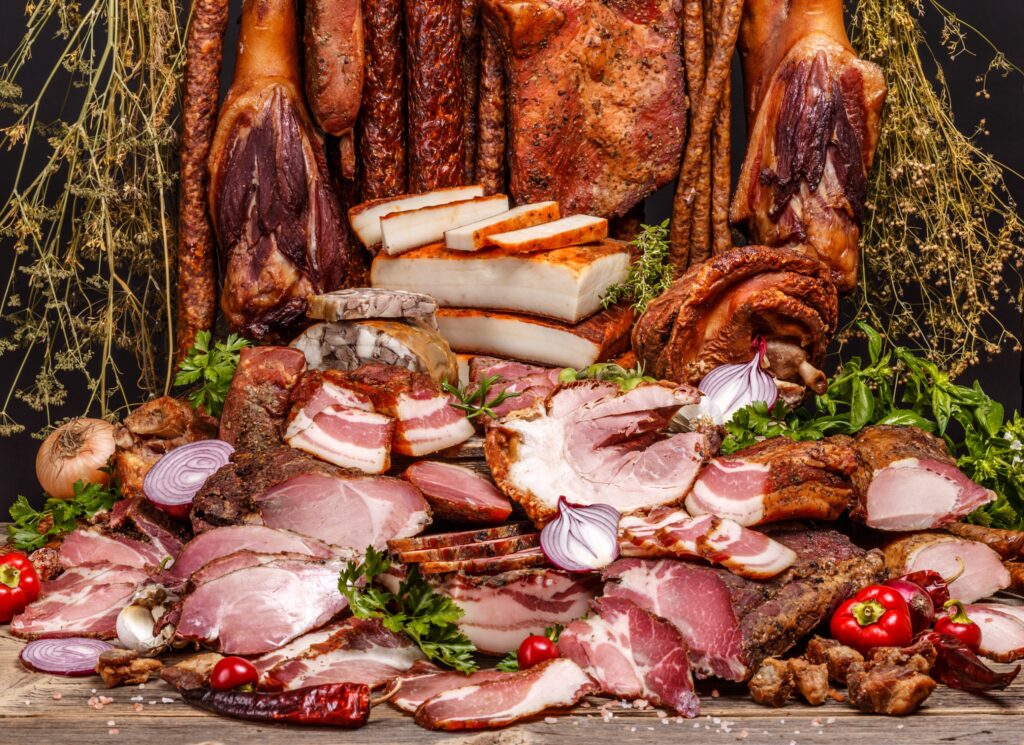
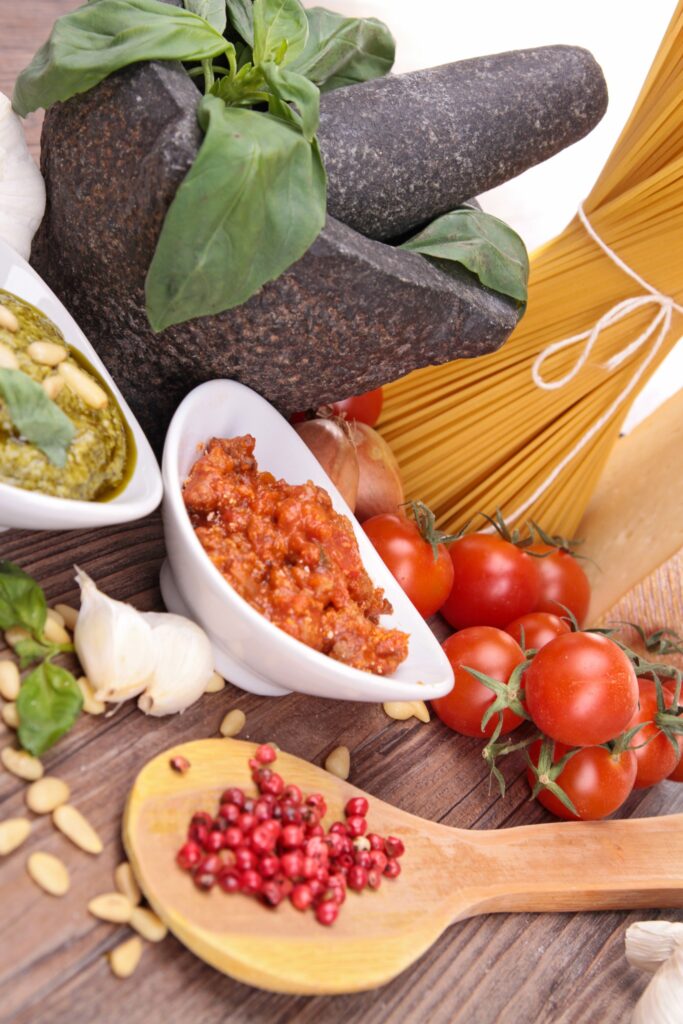
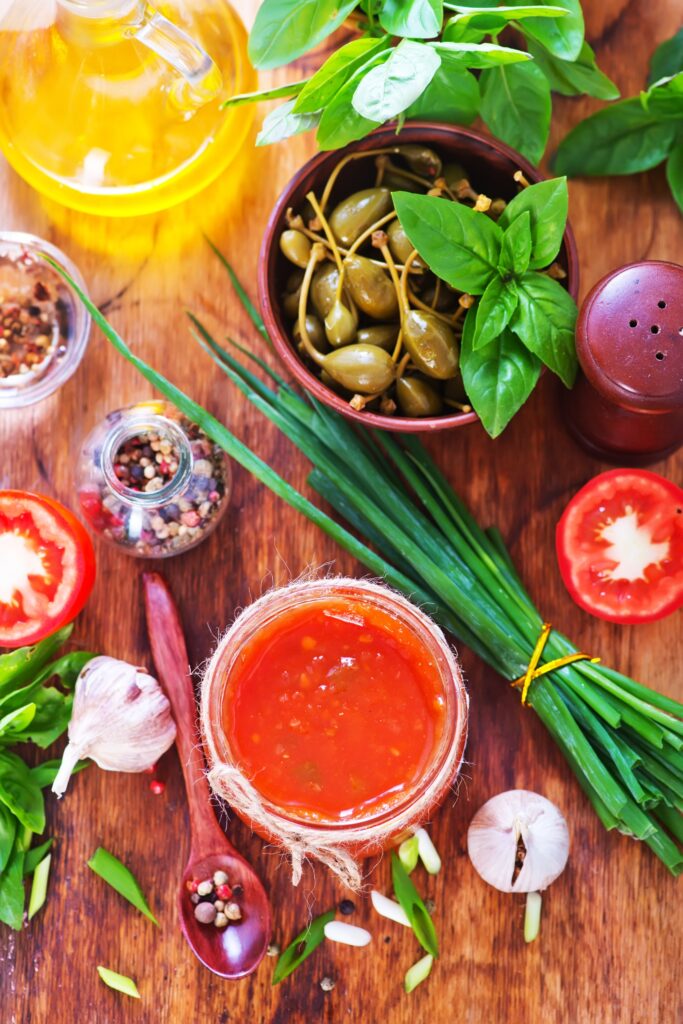
The cuisine of Abruzzo offers a unique variety of ingredients. The region is famous for its cured meats, including Ventricina, Abruzzese salami, and Nnuje, a blend of salami and sausage made from tripe and pork belly. Traditional Abruzzese cheeses include various varieties of pecorino, ricotta, and scamorza. Homemade pasta is another icon of local cuisine, with common types of pasta including maccheroni alla chitarra and gnocchetti abruzzesi. In addition to pasta, Abruzzo is known for the production of high-quality rice, used to prepare dishes like rice and beans and Abruzzese rice soup.
In Molise, various specialties of fresh pasta are prepared. Among the most famous is “pasta alla molisana,” which is usually served with meat-based sauces, fresh tomato, pecorino cheese, and local herbs. Other traditional types of pasta include spaghetti alla chitarra, hand-cut noodles named after the special guitar-shaped grater used to make them, and “cauciuni,” a kind of ravioli filled with ricotta and chocolate.
Calabrian cuisine is also rich in history and tradition, characterized by authentic flavors and high-quality ingredients. Traditional dishes are the result of recipes passed down through time, and they often feature chili peppers or other spicy products. Among the most famous dishes are ‘nduja, chili sausage, Calabrian caponata, and codfish Calabrese style.
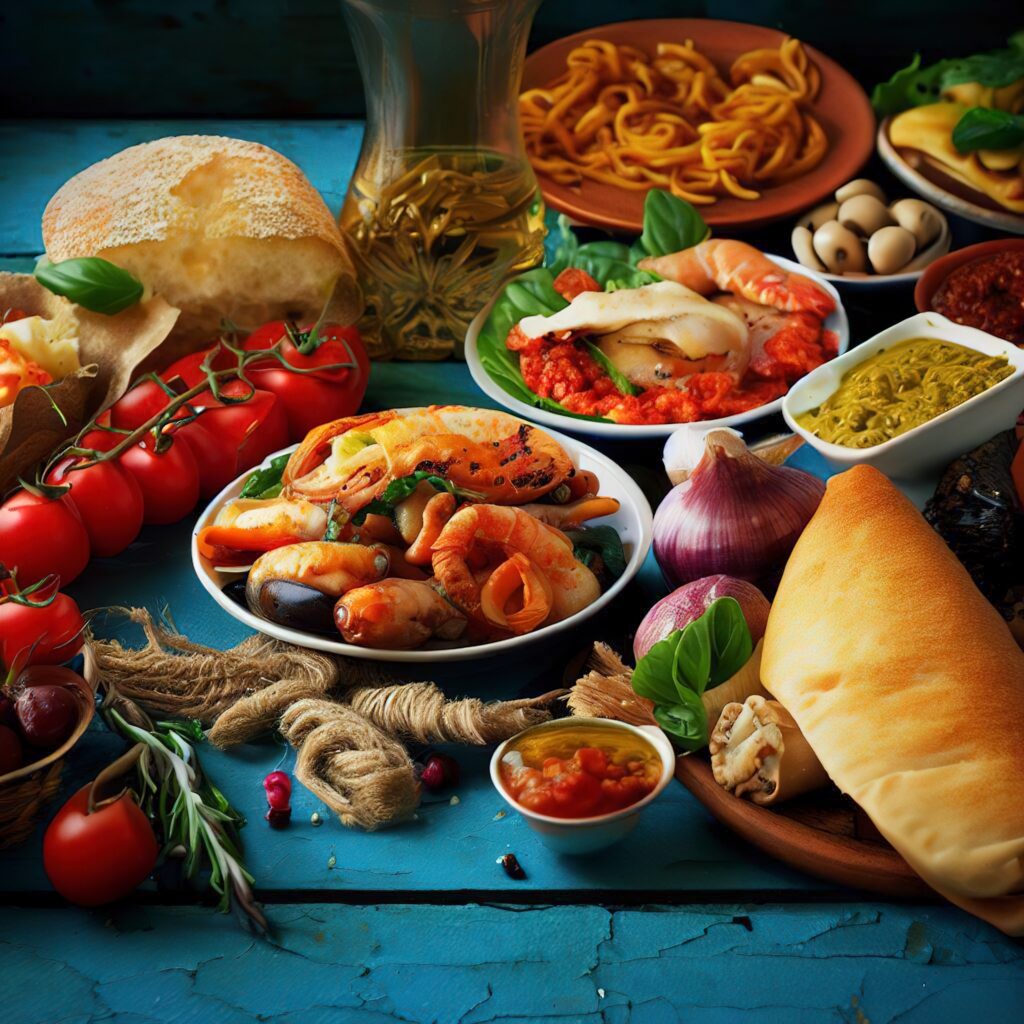
Sicilian cuisine is a true culinary experience that combines tradition, history, and unique flavors. The island is famous for its gastronomic richness, rooted in a combination of Mediterranean, Arab, and Norman influences. From olives to oranges, pistachios to honey, ricotta to pecorino cheese, Sicilian products are appreciated for their authenticity and unique taste. Sicilian pastry is also famous for its irresistible sweets, such as cassata, cannoli, and biscuits made with hazelnuts and almonds.
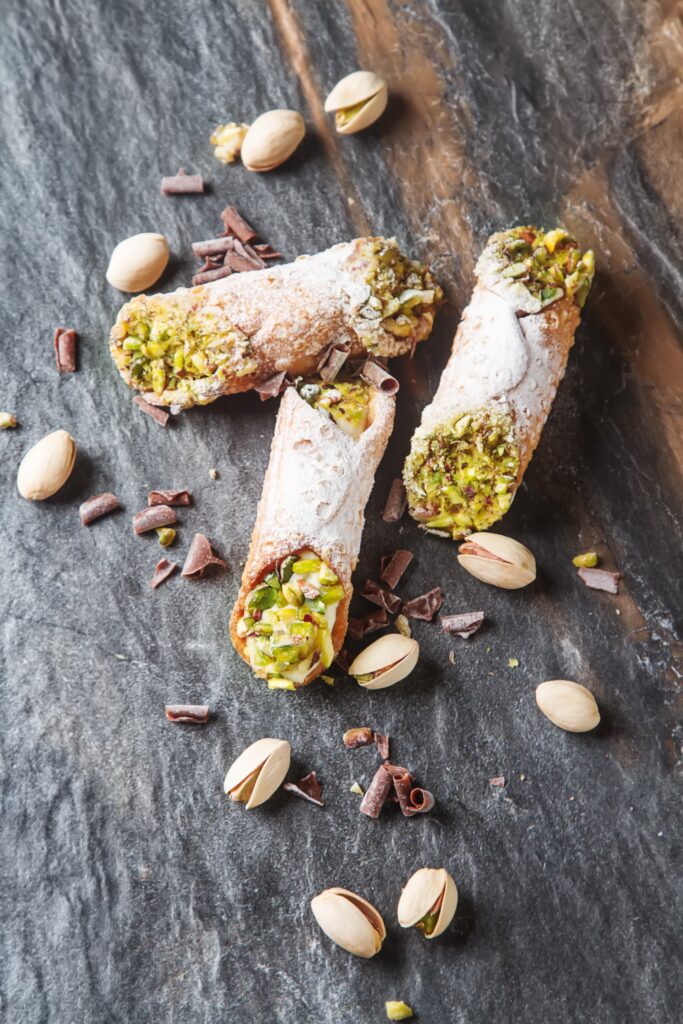

Website sinelitegroup
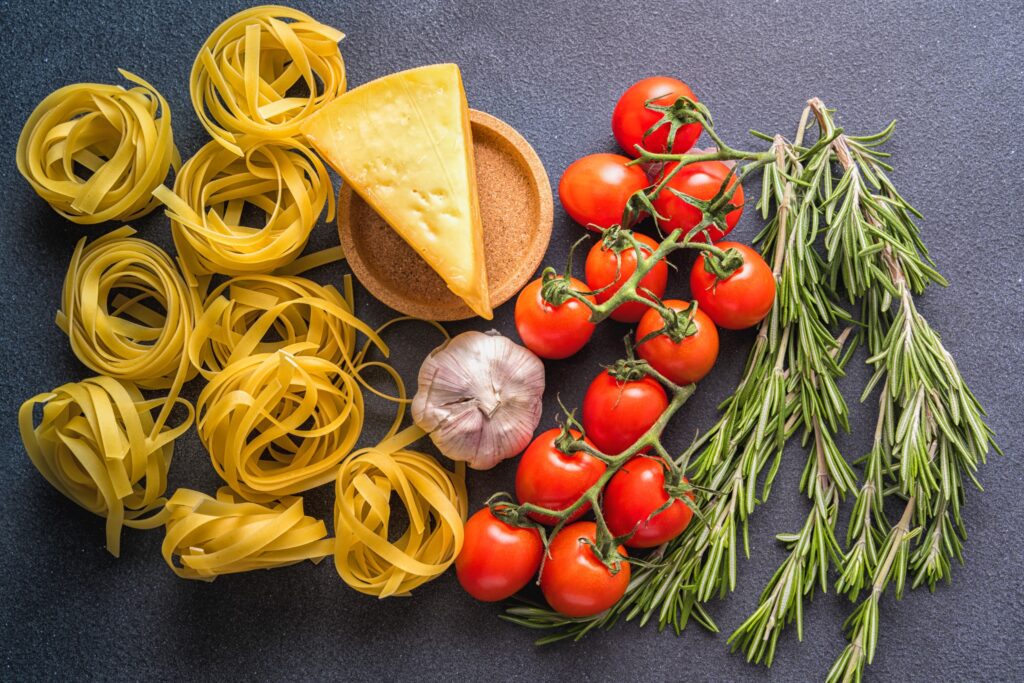
The traditional cuisine of Lombardy is varied and rich in flavors. Gorgonzola and Grana Padano are the most famous cheeses, followed by those from Valsassina, obtained through aging in the natural caves of Introbio, such as Taleggio, Robiola, and Noire di Capra, each with unique characteristics. The production of local cured meats is also an ancient tradition, with bresaola and salame di Milano being two excellences.

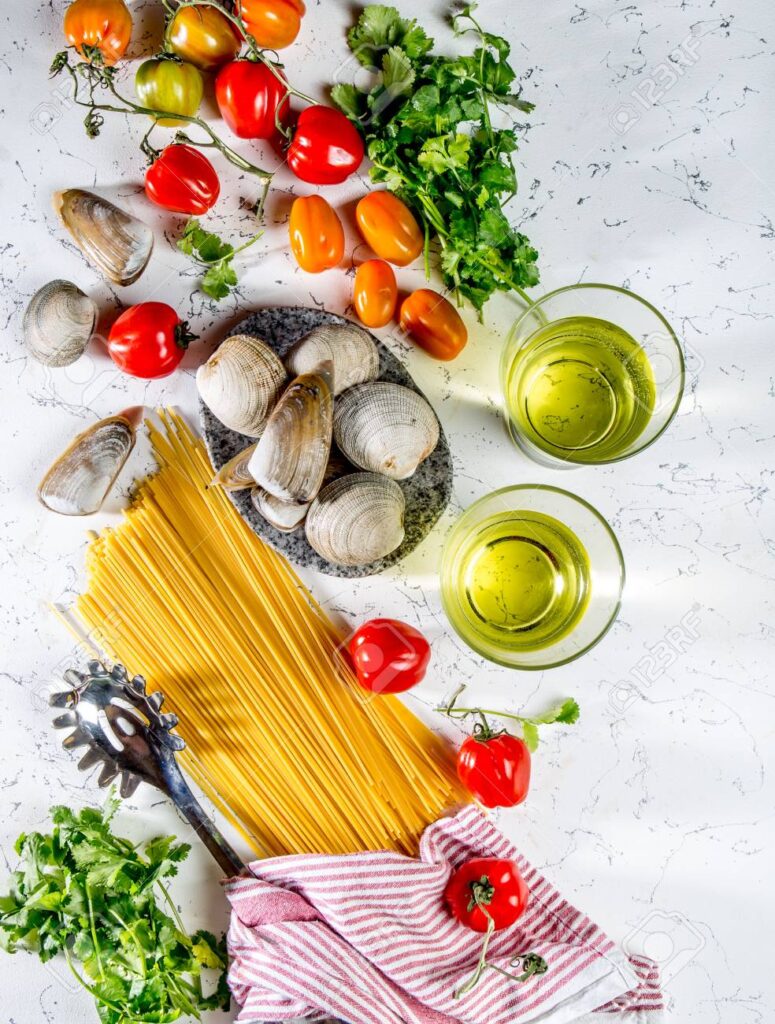
The cuisine of Valle d’Aosta is a fascinating mix of Italian, French, and Swiss influences, reflected in a wide range of dishes and typical products. The dishes are based on local ingredients such as cheeses (the famous Fontina DOP), cured meats, mushrooms, potatoes, rye bread, and game meat. One of the most emblematic dishes is “polenta concia,” a polenta prepared with local cheeses like Fontina and often accompanied by porcini mushrooms or sausage. Another noteworthy dish is “carbonada,” a beef stew cooked with wine, spices, and seasonal vegetables.

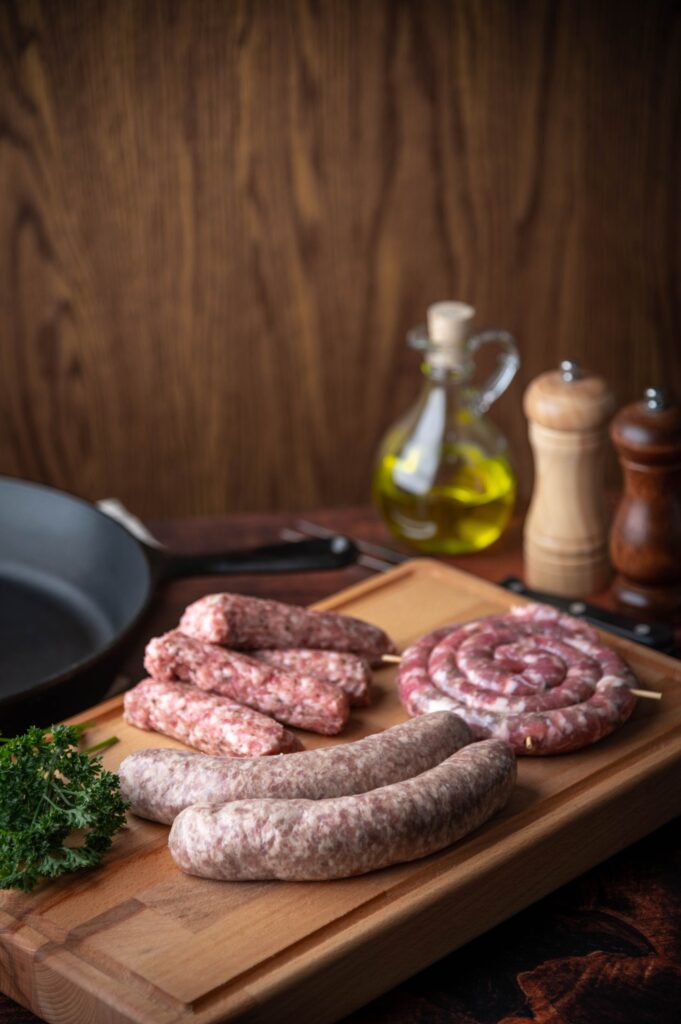
Veneto is characterized by a great variety of flavors and culinary influences. Its geographical location, encompassing the Adriatic coast, the Po plains, and the hills and mountains of the Prealps and Dolomites, allows for a wide choice of agricultural and fishery products. Particularly famous are “baccalà alla vicentina” and “baccalà mantecato alla veneziana,” a typical appetizer often served with bread or polenta crostini. A curiosity about the history of baccalà: the name has its roots in the seafaring tradition and the need to preserve fish for extended periods without it deteriorating. The term “baccalà” comes from the Low German word “bakel-jau,” meaning “hard as a rope,” due to the elongated shape and texture of the dried fish.

The cuisine of Lazio includes richer and more elaborate dishes, with extensive use of pork: here, you can taste pasta alla carbonara and all’amatriciana, coda alla vaccinara, and the famous gnocchi alla romana. Among the region’s excellent products are certainly pecorino from Amatrice, porchetta from Ariccia IGP, guanciale (often used in the preparation of pasta dishes), and salame Corallina, typical of the Lazio Easter tradition. In Umbria, on the other hand, simpler recipes and products like olive oil, cured meats, lentils, and truffles prevail. The region, especially the town of Norcia, is the birthplace of “norcineria,” which is the art of working and preserving pork, a tradition that has solidified over the centuries and continues today in central Italy thanks to “norcini,” artisans who process meat using traditional recipes and methods. Particularly appreciated is the prosciutto di Norcia (IGP since 1998), but also guanciale, capocollo, lonza, and sausages.
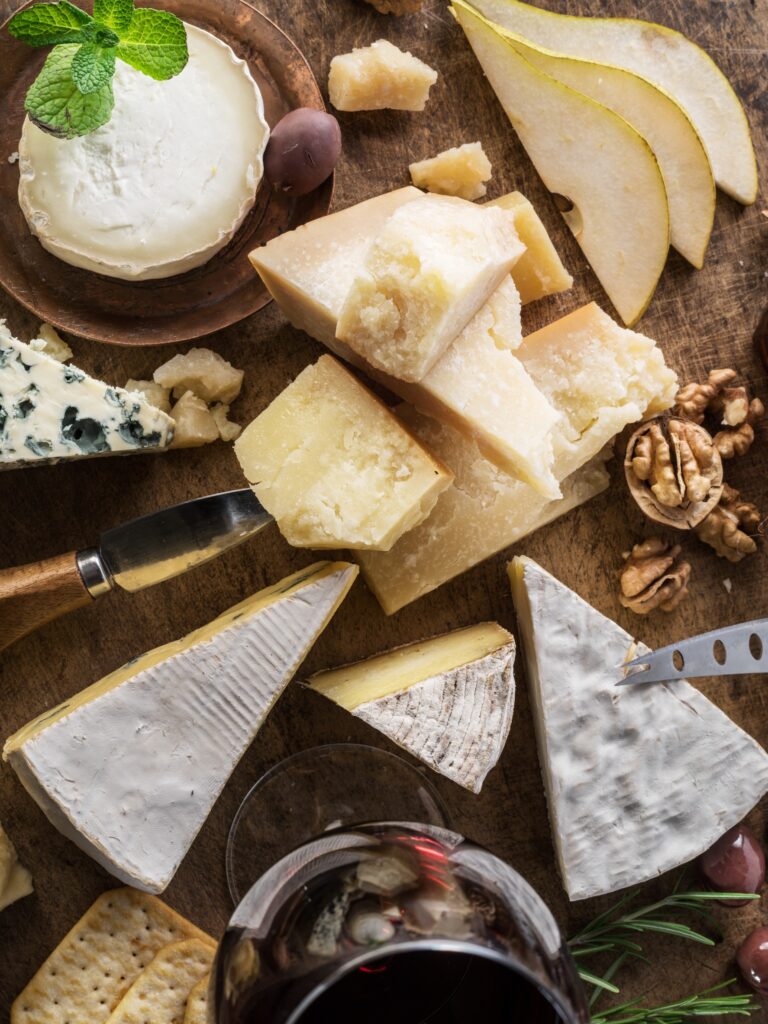

Central regions like Tuscany have a rustic yet very rich cuisine based on ingredients like olive oil, legumes, cereals, and beef, as seen in the famous Florentine steak (Fiorentina). They also feature cured meats (notably, the IGP-certified salame Finocchiona and black pepper-crusted prosciutto) and cheeses such as pecorino di Pienza, pecorino toscano DOP, and pecorini aged in walnut leaves, straw, or pears. Tuscan pecorino cheeses are very versatile in the kitchen. They can be enjoyed on their own, paired with honey or jams, or used as ingredients to enhance many traditional dishes. They are often used to flavor pasta dishes like pappardelle with wild boar ragù, to enrich salads, or to create tasty appetizers.
Located in central Italy, between the Adriatic Sea and the Apennines, the Marche region offers a variety of dishes and prized products, tied to both the sea and hilly areas. It is renowned for its cured meats, such as the delicate and sweet-tasting prosciutto di Carpegna DOP and the IGP-certified Ciauscolo, a spreadable salami flavored with garlic and wine. The region is also known for its Fossa di Sogliano DOP cheese and olives from Ascoli Piceno, known as “olive ascolane.”
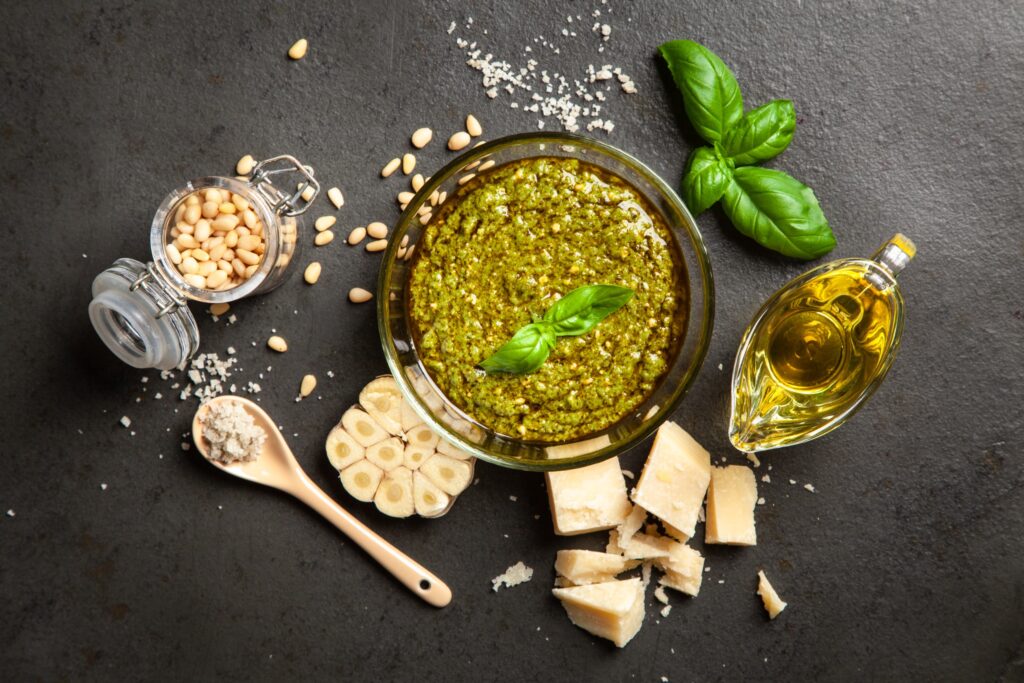

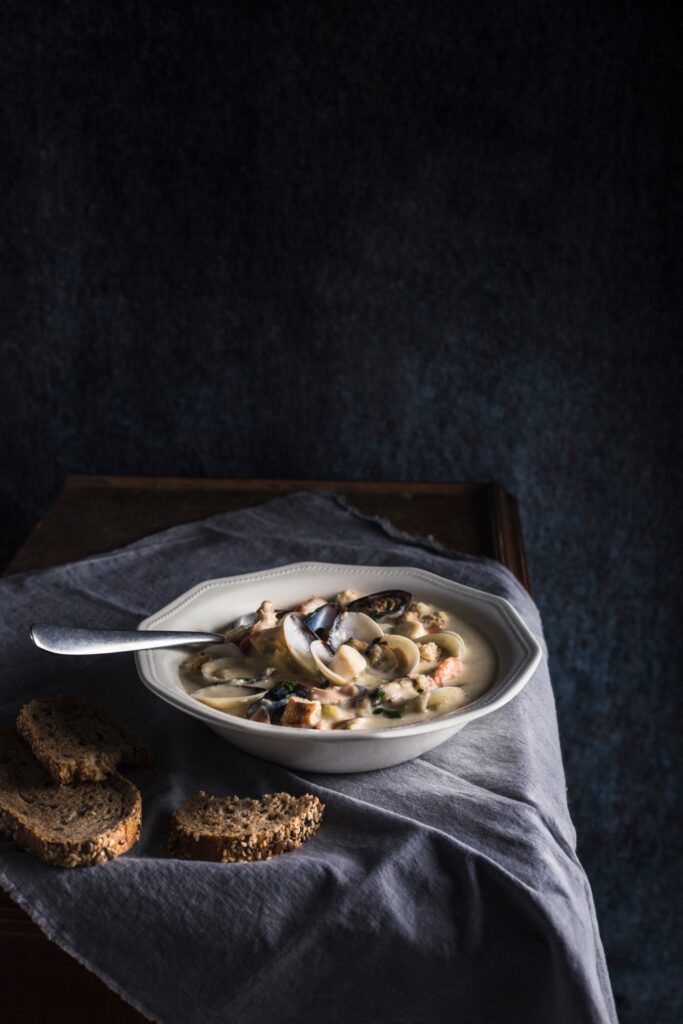
Campania and Puglia are characterized by Mediterranean cuisine, rich in fish, seafood, tomatoes, and olives. Campania’s cuisine has been influenced by various dominations and is quite diverse, while Puglia’s cuisine is renowned for its simplicity and authenticity. Among the most famous dishes are orecchiette with turnip greens, fava beans and chicory, tiella barese (a savory pie), mashed fava beans, and focaccia barese. Campanian cuisine is characterized by the use of a wide variety of fresh, local ingredients, such as tomatoes, mozzarella, and fish. The use of aromatic herbs and spices, like basil and chili pepper, gives Campanian dishes a unique and unforgettable flavor. The region is also famous for its delicious cured meats, such as salame Napoli, a salami with an intense and aromatic taste, salame Sorrento, and sweet (or spicy) Napoli sausage. Among the most famous and appreciated cheeses from Campania are mozzarella di Bufala DOP and provolone del Monaco DOP, a cheese with a bold, slightly spicy taste and a distinctive pear shape.

Thanks to its geographical location and history, Sardinia has developed a unique culinary tradition that combines Mediterranean influences with a touch of originality. Traditional dishes are often prepared using local ingredients such as meat, fish, and intensely flavored cheeses. Among these, pecorino sardo stands out for its bold and aromatic taste, encapsulating the authenticity of Sardinian culture. It is an aged cheese obtained exclusively from sheep’s milk, with its roots in the ancient pastoral traditions of Sardinia, where shepherding was a central economic activity for centuries. Thanks to this tradition, pecorino sardo has become one of its most representative symbols worldwide. Among the main dishes are zuppa gallurese (a traditional bread soup), roast suckling pig, pane carasau (crispy Sardinian flatbread), and mirto, a typical Sardinian liqueur.
Informations concierge@sinelitegroup.com
Reservations booking@sinelitegroup.com




